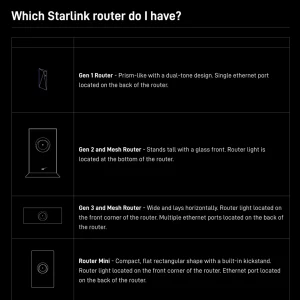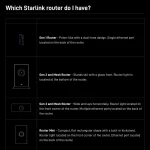Powered by the thinkbroadband broadband speed test.
Average Download Speeds (Median)
| No. | Operator | H2 - 2025 (Top 10%) | H1 - 2025 (Top 10%) | Change % |
| 1. | Virgin Media | 262.9Mbps (774.3Mbps) | 264Mbps (767.8Mbps) | -0.42% |
| 2. | Zen Internet | 103.7Mbps (889.6Mbps) | 105.6Mbps (904.4Mbps) | -1.8% |
| 3. | Vodafone | 80.3Mbps (548Mbps) | 67.9Mbps (463.9Mbps) | 18.26% |
| 4. | EE | 65.6Mbps (900.6Mbps) | 75.1Mbps (715.1Mbps) | -12.65% |
| 5. | BT | 62.7Mbps (430.4Mbps) | 66.5Mbps (441.1Mbps) | -5.71% |
| 6. | Sky Broadband | 61.1Mbps (231.5Mbps) | 55.9Mbps (291.5Mbps) | 9.3% |
| 7. | Plusnet | 52.8Mbps (290.9Mbps) | 48.5Mbps (262.2Mbps) | 8.87% |
| 8. | TalkTalk | 41.2Mbps (149.6Mbps) | 37.5Mbps (147.6Mbps) | 9.87% |
Average Upload Speeds (Median)
| No. | Operator | H2 - 2025 | H1 - 2025 | Change % |
| 1. | Zen Internet | 37.2Mbps | 46.3Mbps | -19.65% |
| 2. | Virgin Media | 33.9Mbps | 33.7Mbps | 0.59% |
| 4. | Vodafone | 19.3Mbps | 18.2Mbps | 6.04% |
| 3. | EE | 19.1Mbps | 18.4Mbps | 3.8% |
| 5. | BT | 17.5Mbps | 17.7Mbps | -1.13% |
| 6. | Sky Broadband | 17.4Mbps | 16.1Mbps | 8.07% |
| 7. | Plusnet | 15.4Mbps | 13.2Mbps | 16.67% |
| 8. | TalkTalk | 9.9Mbps | 9.3Mbps | 6.45% |
Overall, the average download speed of the top national providers was 91.28Mbps (up from 90.12Mbps) and the average upload speed hit 21.21Mbps (down from 21.61Mbps).
The table below is ordered by median download speed, but for extra context we've also included a figure for upload performance in brackets. Most of the providers in this list are faster than the major players because they're often connected to alternative networks with faster entry-level packages and will have a lower portion of users (sometimes none at all) on older copper-based connections (ADSL, FTTC etc.).
However, there are some exceptions to the above, such as some highly rated ISPs that have been around a long time - these may suffer in this table due to the impact of legacy users on slower lines.
Fastest Smaller ISPs - Average Downloads (Upload)
| Operator | H2 - 2025 | H1 - 2025 |
| toob | 447.6Mbps (404.4Mbps) | 508Mbps (379.2Mbps) |
| Aquiss | 438.7Mbps (94.9Mbps) | 908.7Mbps (108.3Mbps) |
| CommunityFibre | 427.2Mbps (302.3Mbps) | 506.9Mbps (373.9Mbps) |
| brsk | 389.8Mbps (354.4Mbps) | 239.2Mbps (252.8Mbps) |
| YouFibre | 375.6Mbps (302.4Mbps) | 287.2Mbps (197.5Mbps) |
| Hyperoptic | 360.3Mbps (269.3Mbps) | 394Mbps (355Mbps) |
| Trooli | 332.1Mbps (187.7Mbps) | no data (new entry) |
| Hey! Broadband | 308.2Mbps (437.5Mbps) | 404.5Mbps (401Mbps) |
| Connect Fibre | 272.6Mbps (252.2Mbps) | 260.7Mbps (230.2Mbps) |
| Highland Broadband | 233.1Mbps (127.9Mbps) | 230.2Mbps (225Mbps) |
| Squirrel Internet | 225.4Mbps (125Mbps) | 346.8Mbps (262.9Mbps) |
| Wessex Internet | 222.4Mbps (130.1Mbps) | no data (new entry) |
| Gigaclear | 204.8Mbps (198.5Mbps) | 236.8Mbps (209.9Mbps) |
| Ogi | 200.9Mbps (30.4Mbps) | no data (new entry) |
| Zzoomm | 192.9Mbps (156.2Mbps) | no data (new entry) |
| Fibrus | 171.9Mbps (85Mbps) | 237.2Mbps (77Mbps) |
| Quickline | 150.4Mbps (115.7Mbps) | no data (new entry) |
| Andrews and Arnold | 147.8Mbps (37Mbps) | no data (new entry) |
| iDNET | 130Mbps (73.5Mbps) | no data (new entry) |
| KCOM | 106.3Mbps (105.2Mbps) | 242.1Mbps (104.9Mbps) |
Average Starlink UK Broadband Speeds
| H2 - 2025 (Top 10%) | H1 - 2025 (Top 10%) | |
| Download | 126.2Mbps (199.4Mbps) | 78.7Mbps (223.4Mbps) |
| Upload | 19.2Mbps (26.2Mbps) | 10.8Mbps (18.5Mbps) |
Average Mobile Download Speeds
| No. | Operator | H2 2025 (Top 10%) | H1 2025 (Top 10%) | Change |
| 1. | Three UK | 34.9Mbps (275.3Mbps) | 36.1Mbps (268.1Mbps) | -3.32% |
| 3. | EE | 26.8Mbps (126.8Mbps) | 31.5Mbps (124.3Mbps) | -14.92% |
| 2. | Vodafone | 25.8Mbps (149.6Mbps) | 20.6Mbps (98.7Mbps) | 25.24% |
| 4. | O2 | 19.5Mbps (118.9Mbps) | 17.5Mbps (51.2Mbps) | 11.43% |
Average Upload Speeds
| No. | Operator | H2 2025 (Top 10%) | H1 2025 (Top 10%) | Change |
| 1. | EE | 6.4Mbps (33.3Mbps) | 7.6Mbps (35Mbps) | -15.79% |
| 2. | Three UK | 5.4Mbps (34.2Mbps) | 6.2Mbps (41.6Mbps) | -12.9% |
| 3. | Vodafone | 3.9Mbps (13.1Mbps) | 4.2Mbps (18.3Mbps) | -7.14% |
| 4. | O2 | 3.1Mbps (12.5Mbps) | 3Mbps (17.3Mbps) | 3.33% |
Overall, the average download speed of the four primary mobile operators was 26.75Mbps (up from 26.42Mbps in H1 2025) and the average upload speed hit 4.7Mbps (down from 5.25Mbps).
Disclaimer: Please take average (median) speeds with a big pinch of salt. Every home is different and performance can be affected by all sorts of issues, many of which are beyond the provider's ability to control (e.g. tests conducted via slower smartphone vs faster desktop computers, slow wifi, poor home wiring etc.), thus we do not consider the above data to be a reliable barometer for individual user connectivity, but it can help to highlight general changes in the market.








Latest UK ISP News
Helpful ISP Guides and Tips
- FTTP (6795)
- BT (3880)
- Politics (3071)
- Business (2766)
- Openreach (2661)
- Building Digital UK (2510)
- Mobile Broadband (2473)
- FTTC (2141)
- Statistics (2125)
- 4G (2091)
- Virgin Media (2022)
- Ofcom Regulation (1779)
- 5G (1730)
- Fibre Optic (1604)
- Wireless Internet (1594)































